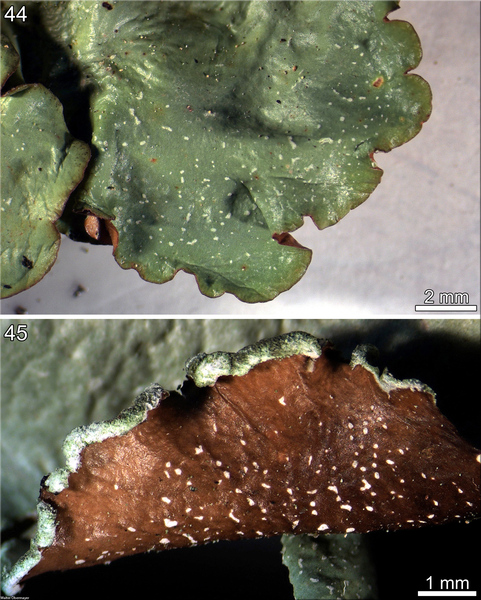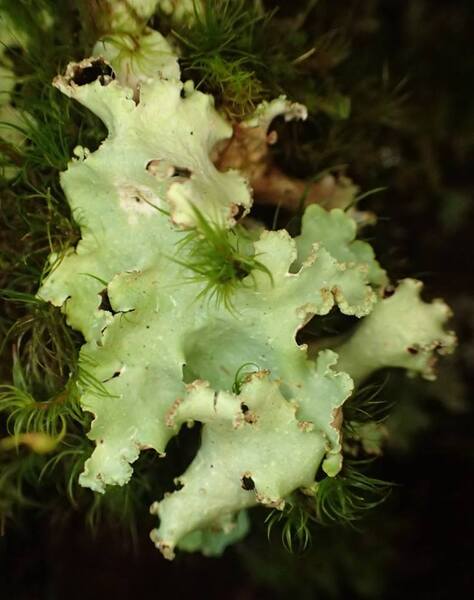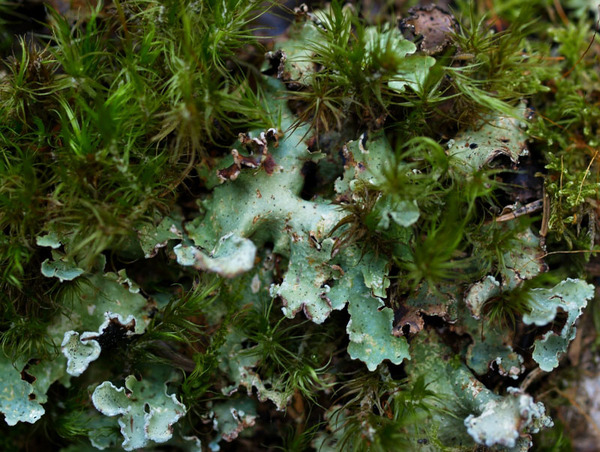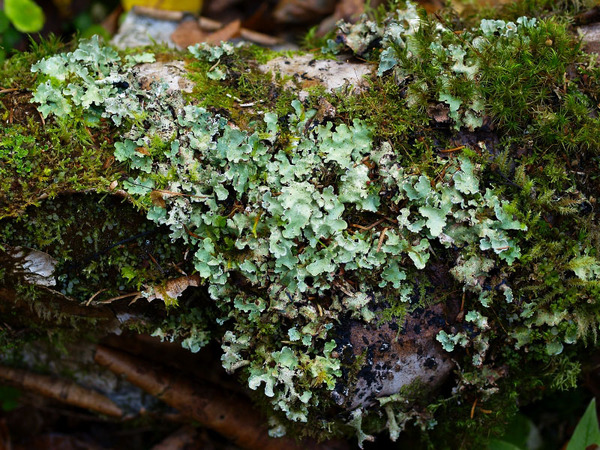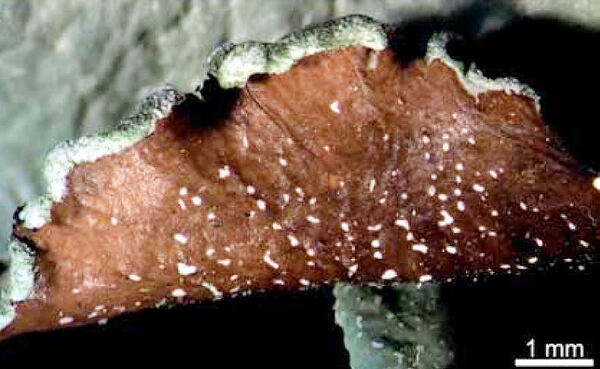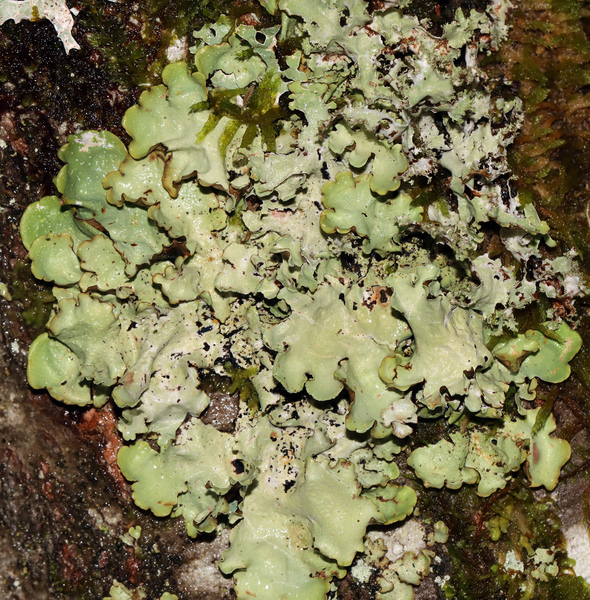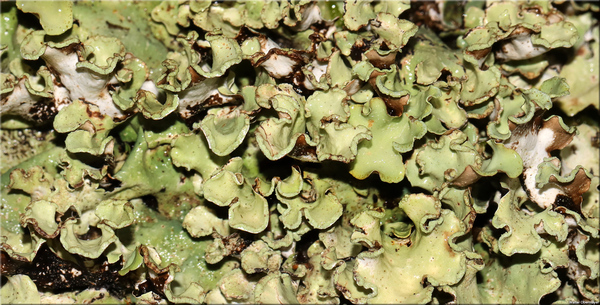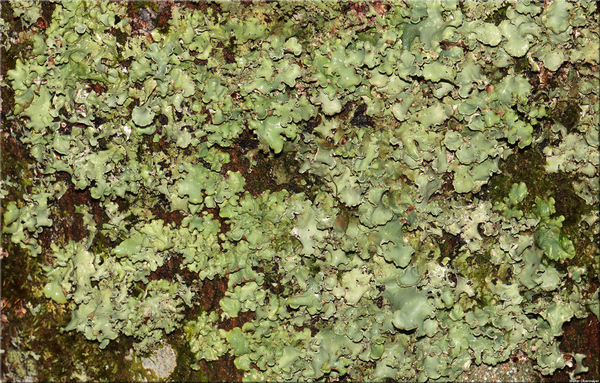Cetrelia cetrarioides (Duby) W.L. Culb. & C.F. Culb.
Contr. U.S. Nat. Herb., 34: 498, 1968. Basionym: Parmelia perlata var. cetrarioides Delise ex Duby - Bot. Gall., ed. 2: 601, 1830.
Synonyms:
Distribution: N - Frl (Gheza & al. 2025), Ven (Obermayer & Mayrhofer 2007, Nascimbene & al. 2010b, Gheza & al. 2025), TAA (Obermayer and Mayrhofer 2007, Lang & al. 2010, Nascimbene 2014, Nascimbene & Marini 2015, Trindade & al. 2021, Nascimbene & al. 2022, Gheza & al. 2025), Lomb (Gheza 2019, Ravera & al. 2021c, Gheza & al. 2025), Piem (Gheza & al. 2025).
Description: Thallus foliose, heteromerous, dorsiventral, loosely attached, forming wavy, wide-spreading, usually orbicular, 6-20(-40) cm wide patches. Lobes broad and rotund, (0.5-)1-1.5(-2) cm wide, with raised margins, greenish grey (sometimes tinged brown), pseudocyphellate; pseudocyphellae on upper surface punctiform, small to rather large, usually not raised, often lacking in the central parts of thallus, those on the lower surface frequently present, at least on some ascending, contorted lobe apices. Soralia primarily marginal, elongated, usually very smooth and strongly convex, with fine, 25-35(-40) µm thick soredia. Lower surface black, wrinkled, with scattered, simple, black rhizines and a brown, rhizine-free zone along the margin. Upper and lower cortices prosoplectenchymatous, the upper one with a non-pored epicortex, of densely agglutinated hyphae with tiny lumina; medulla white, with isolichenan, I-. Apothecia very rare, lecanorine. Asci 8-spored, Lecanora-type. Ascospores 1-celled, hyaline, ellipsoid, 12-15 x 7-10 µm. Pycnidia: unknown. Photobiont chlorococcoid. Spot tests: cortex K+ (weakly) yellow, C-, KC-, P-; medulla and soralia K+ yellow, C- or C+ faintly pink/violet, KC+ pale pink of pale reddish brown, P-. Chemistry: cortex with atranorin and chloroatranorin (in lower amounts than in soralia); soralia (and medulla) with atranorin, perlatolic acid (major), imbricaric acid (traces), 4-O-methylolivetoric acid (UV+ blue-white, best seen on TLC plates under short-wave light), and anziaic acid (traces), sometimes with a fatty acid.Note: a species with the perlatolic acid syndrome plus traces of imbricaric acid, found on the bark of broad-leaved trees and on epiphytic mosses, more rarely on silicicolous mosses in humid, old, mostly montane forests. It is included in the Italian red list of epiphytic lichens as “Data Deficient” (Nascimbene & al. 2013c). Only records confirmed by Gheza & al. (2025) are reported.
Growth form: Foliose, broad lobed
Substrata: bark
Photobiont: green algae other than Trentepohlia
Reproductive strategy: mainly asexual, by soredia, or soredia-like structures (e.g. blastidia)
Most common in areas with a humid-warm climate (e.g. most of Tyrrenian Italy)
Commonnes-rarity: (info)
Alpine belt: absent
Subalpine belt: absent
Oromediterranean belt: absent
Montane belt: very rare
Submediterranean belt: extremely rare
Padanian area: absent
Humid submediterranean belt: extremely rare
Humid mediterranean belt: absent
Dry mediterranean belt: absent
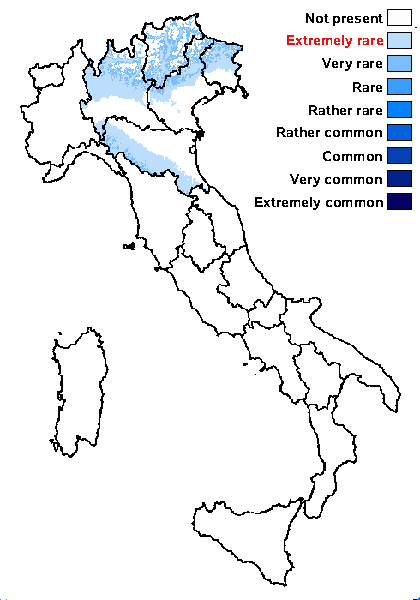
Predictive model
Herbarium samples
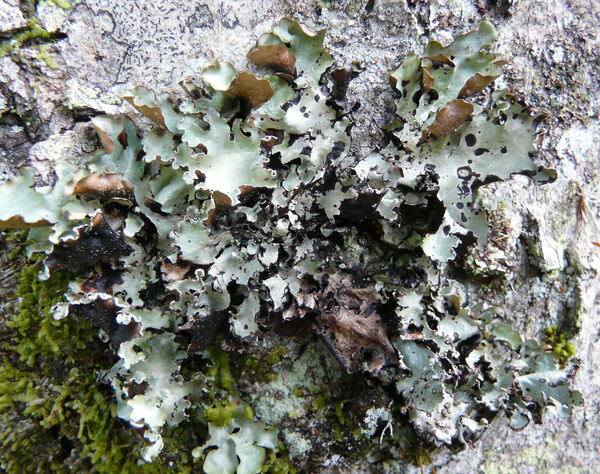

Andrea Moro; Owner: Department of Life Sciences, University of Trieste
Italia, Veneto, BL, Comune di Sappada, pendici boscose del Monte Peralba.
2008.27.08
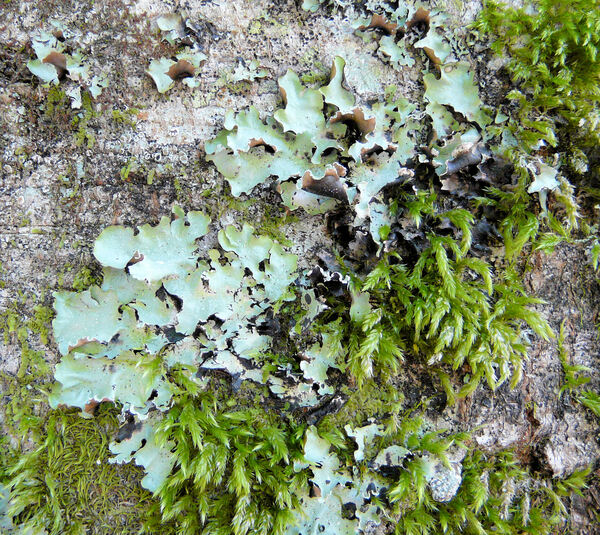

Andrea Moro; Owner: Department of Life Sciences, University of Trieste
Italia, Friuli-Venezia Giulia, UD, Comune di Sauris, Bosco della Stua presso il Lago
2008.26.08
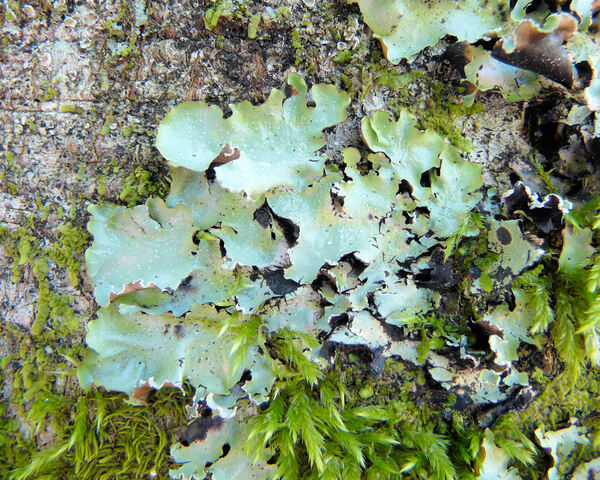

Andrea Moro; Owner: Department of Life Sciences, University of Trieste
Italia, Friuli-Venezia Giulia, UD, Comune di Sauris, Bosco della Stua presso il Lago
2008.26.08
Growth form: Foliose, broad lobed
Substrata: bark
Photobiont: green algae other than Trentepohlia
Reproductive strategy: mainly asexual, by soredia, or soredia-like structures (e.g. blastidia)
Most common in areas with a humid-warm climate (e.g. most of Tyrrenian Italy)
Commonnes-rarity: (info)
Alpine belt: absent
Subalpine belt: absent
Oromediterranean belt: absent
Montane belt: very rare
Submediterranean belt: extremely rare
Padanian area: absent
Humid submediterranean belt: extremely rare
Humid mediterranean belt: absent
Dry mediterranean belt: absent

Predictive model
| Herbarium samples |


Andrea Moro; Owner: Department of Life Sciences, University of Trieste
Italia, Veneto, BL, Comune di Sappada, pendici boscose del Monte Peralba.
2008.27.08


Andrea Moro; Owner: Department of Life Sciences, University of Trieste
Italia, Friuli-Venezia Giulia, UD, Comune di Sauris, Bosco della Stua presso il Lago
2008.26.08


 INDEX FUNGORUM
INDEX FUNGORUM
 GBIF
GBIF
 DOLICHENS
DOLICHENS
